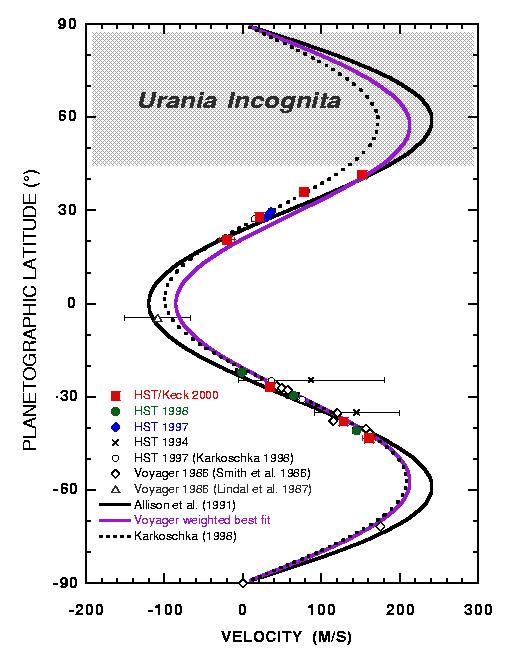
 |
||
|
Lick
Observatory, Mt.Hamilton, California
|
W.
M. Keck Observatory,
Hawaii
|
URANUS: Clouds and Rings visible using Adaptive Optics
URANUS: FIRST AO IMAGE (2000) Near infrared image of Uranus taken by Keck II that marks the first ground-based detection of the faint inner rings around that planet. The image is obtained at infrared wavelengths between 1.6 and 2.3 micro-meters. The planet itself is artificially darkened by a factor of about 20. Clearly visible are the methane haze layer on Uranus's south polar cap, and the tiny cloud features at high northern latitudes. Inside the bright epsilon ring three faint rings can be discerned, which each consist of multiple ringlets. (de Pater, I., S.G. Gibbard, B. Macintosh, H.G. Roe, D. Gavel, and C.E. Max, 2002. Keck Adaptive Optics Images of Uranus and its Rings. Icarus 160, 359-374.)

URANUS: WIND PROFILE (2000) In combination with HST data, these Keck data have been used to determine the wind profile in Uranus' atmosphere in June 2000. (Hammel, H.B., K. Rages, G. W. Lockwood, E. Karkoschka, and I. de Pater, 2001. New measurements of the winds of Uranus. Icarus 153, 229-235.)
